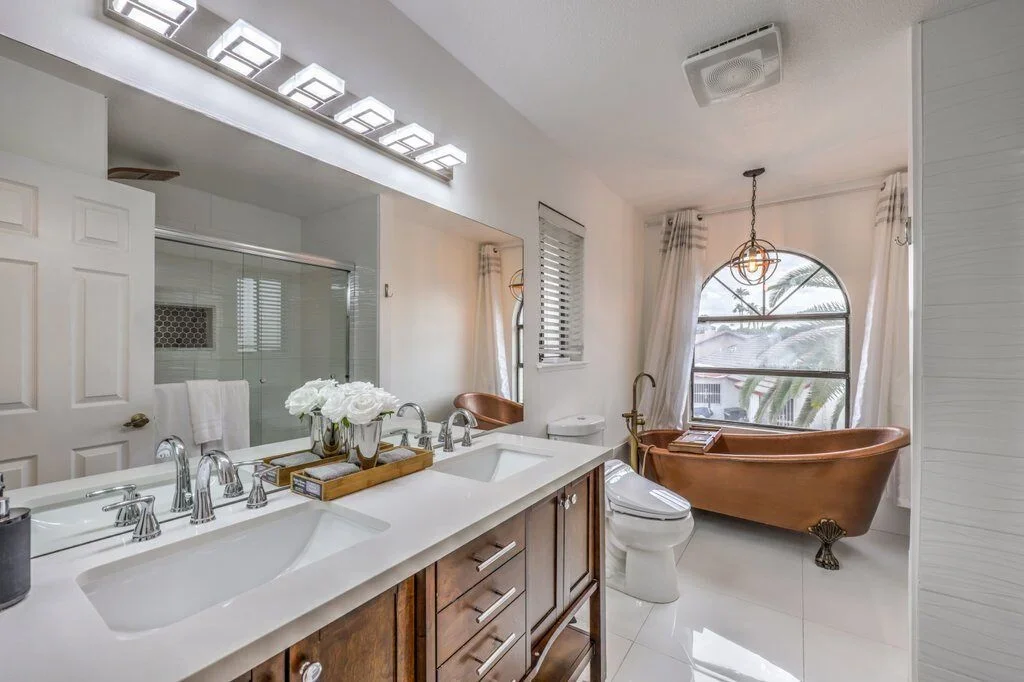
Nevada Mid-Term Rental Solutions for You
Discover flexible mid-term rental solutions in Nevada that suit your lifestyle. Our properties offer comfort and convenience for extended stays, with personalized support to ensure a seamless experience..
Onboarding Made Easy
✔ Owner’s Portal
✔ Walk through and consultation
✔ Marketing preparation
✔ Hire High end photographers
✔ Advise you on stocking and preparation of your rental
Attracting Guests
✔ Optimized for Airbnb, VRBO, Zillow and dozens of booking sites
✔ Database of rental leads to target market
✔ Direct booking
✔ Rental application and screening for longer term tenants
Managing the Details
✔ Post-stay walk throughs
✔ Oversee and hold accountable cleaning crews and pool vendors
✔ Tracking stocks
✔ Collecting rent and payments
✔ Guest screening and damage coverage and security deposits
Taking Care of You
✔ Stay in your property whenever you want!
✔ Amazing local staff
✔ Emergency support
✔ Overseeing maintenance
✔ Help with expenses and accounting
Need More? 99 Things We Do For You ☟
-
1. Conduct an initial consultation with the property owner: The first step is to conduct an initial consultation with the property owner to discuss their needs and expectations.
2. Make necessary improvements: Conduct any necessary repairs, upgrades, or renovations to the property to make it more attractive to potential tenants.
3. Develop a marketing plan: Develop a comprehensive marketing plan that outlines the various channels and tactics you will use to promote the property.
4. Take professional photos: Use professional photography to showcase the property's best features and ensure that the images are high-quality and visually appealing.
5. Write compelling property descriptions: Write detailed and compelling descriptions of the property that highlight its unique features and benefits.
6. Advertise on listing sites: Use popular rental listing sites such as Zillow, Trulia, and Apartments.com to advertise the property to a wide audience.
7. Leverage social media: Promote the rental property through social media platforms such as Facebook, Instagram, and Twitter to reach a larger audience.
8. Provide a 24/7, 365 days a year tenant communication line
9. Provide an owner hotline for text and call communication directly to the team
10. Provide 5-Star client care, including quick response times to all client communication
11. Work with home warranty companies (when owner has one in place) to try and mitigate costs.
12. Hire and oversee landscapers (when applicable)
13. Hire and oversee pool vendors (when applicable)
14. Coordinate cosmetic repairs or improvements to the property at owner’s request. *
15. Hire a professional photographer for initial marketing and again after any cosmetic renovations
16. At owner request, coordinate and help owner HOA Architectural Review requests (including acquiring neighbor signatures)*
17. Annual interior inspection of the property to check condition, compliance and deferred maintenance issues.
18. Dispatch for annual HVAC system checks
19. One-time professional video “showing tour” of your property
-
20. Negotiate lease extensions with tenants
21. Market research to determine when it is appropriate to recommend a rent increase to the owner
22. Complete lease extension addendum signed by all parties
-
23. Update the owner on any pending vacancies
24. Provide tenant a move-out letter prior to vacancy
25. Consult with tenant on how to leave the property with the goal of a return of their security deposit
26. At owner request, establish utilities during vacancy period *
27. Conduct a move-out walkthrough to deter disputes over security deposit and protect the owner
28. Prepare a thorough move-out inspection report
29. Review the move-in report for the outgoing tenant and compare to determine eligibility for security deposit refund
30. Dispatch vendors for move-out repairs
31. Property manager to submit a Cosmetic Review noting any long term updating that may be needed to maintain top rent, and advise the owner
32. Procure estimates for any cosmetic updates needed
33. Complete security deposit accounting promptly in accordance with state law
34. Process any security deposit refund due to the tenant
35. Update photos or marketing as needed only
36. List property for rent on all channels
37. Setup showing agents for showing of the property
38. Handle rental leads and inquiries
39. Send new tenant a copy of the HOA rules, regulations and CC&Rs
40. Hold regular meetings with the landlord to discuss property performance and strategy
-
42. Collect and review rental applications: Check for any incomplete or inaccurate information.
43. Run a credit check: A credit check is important to ensure that the applicant has good credit history and can afford to pay the rent on time.
44. Verify employment and income: It's important to verify the applicant's employment and income to confirm that they can afford to pay the rent.
45. Check references: Contact the applicant's previous landlords and references to gather information about their past rental history, behavior, and reliability.
46. Review any pet or smoking policies: If the applicant has pets or smokes, review any specific policies related to these issues and ensure that they are willing to comply with them.
47. Determine eligibility: Based on the information gathered, determine whether the applicant meets the eligibility criteria for the rental property.
48. Process incoming rental applications
49. Consult with owner on rental applications
50. Advise accepted applicant and onboard as new tenants
51. Conduct a move-in walk through to prepare a thorough record for when tenant vacates
52. Key release to new tenant
53. Process tenant move-in report and any requests upon move-in that may require attention
54. Send copy of the lease to the HOA / Common Interest Community
55. Provide a lease agreement: If the applicant is approved, provide them with a lease agreement that outlines the terms and conditions of the rental.
56. Collect security deposit and first month's rent: Before the tenant moves in, collect a security deposit and the first month's rent.
57. Sign the lease: Once all necessary documentation has been reviewed, signed, and processed, sign the lease agreement and officially approve the rental applicant.
58. Send legally required adverse action letters to declined applications
59. Ensure Fair Housing Laws are followed to keep all parties out of trouble
-
60. Collect rent
61. Collect and account for security deposits
62. Safeguard deposits in broker trust account
63. Direct deposit (for free) rent funds to owner account
64. Keep good records of all invoices, receipts and signed contracts for the property
65. Pay trash bills at owners request
66. Pay HOA Dues at owners request
67. Pay sewer bills at owners request
68. Pay property taxes at owners request
69. Pay insurance bills at owners request
70. Pay any landscape and pool bills on owner behalf
71. Send monies owed by tenant to collections agency
72. Onboard new vendors as needed, and verify insurance and licensing (where applicable)
-
73. Respond to tenant repair requests
74. Enforce the tenant repair deductible terms in the lease agreement
75. Dispatch vendors for repair items
76. Procure estimates for larger repair items
77. Get owner approval for repairs exceeding $200
78. Work with owners’ insurance company for insurable expenses*
79. Annual update/survey on bills and accounting to ensure accuracy
80. Provide monthly accounting on any expenses or invoices
-
81. Send a reminder notice: Send a friendly reminder notice to the tenant as soon as their rent payment is late. Sometimes tenants simply forget to pay and a simple reminder can be enough to prompt payment.
82. Follow up with a phone call: After sending a reminder notice, follow up with a phone call to discuss the situation with the tenant and find out when they plan to make the payment.
83. Assess any late fees: Review the lease agreement to determine if late fees should be assessed and apply them accordingly.
84. Determine the reason for the late payment: Ask the tenant why their payment is late and see if there are underlying issues that need to be addressed, such as financial difficulties or personal problems.
85. Offer a payment plan if appropriate and owner approves, if there is a short term problem. This is in rare circumstances
86. Serve a notice to quit: If the tenant fails to pay their rent and does not respond to your attempts to contact them, serve them with a notice to quit according to state laws.
87. File for eviction: If the tenant continues to refuse to pay or comply with their lease agreement, file for eviction through the court system.
88. Calculate any damages owed: If the tenant leaves the property before paying their full rent or damages are caused to the property.
89. Escalate as permitted by state law to collect rent in a timely fashion
90. Oversee and complete eviction when necessary
91. Consult with owner and owner’s attorney if needed on eviction processes
92. For bounced checks, enforce certified funds policy for the tenant
93. Initiate additional inspections when tenants become delinquent or other red flags arise
-
94. Provide tenant education and training on proper property use and maintenance
95. Develop and implement policies and procedures for tenant compliance
96. Proactively monitor rental market trends and make recommendations accordingly
97. Stay apprised on changing tenant laws at the state and federal (Fair Housing) level to stay out of trouble
98. Attend continuing education to learn new skills and technologies to be more affective
99. Watch for and adjust to trends in the market including economic upheaval and emergencies that may require change of strategy in dealing with tenants





